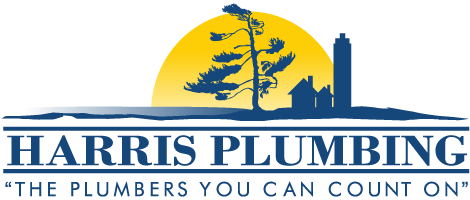
Water systems can malfunction for many different reasons, with back-pressure and back-siphonage being the primary way. As such, backflow issues can prove not only gross but also toxic, as harmful chemicals and bacteria can contaminate drinking water. As a result, backflow can cause serious bodily harm through the spreading of illness and disease and has historically been linked to the spread of typhoid and dysentery, infectious hepatitis, Legionnaire’s disease, salmonella, as well as many other health crises throughout the world.
Due to these concerns, the Ontario Water Works Association has established a working group for backflow prevention that reviews and researches how Ontario can reduce and eliminate backflow risks. As part of this initiative, we at Harris Plumbing have chosen to use our platform to further educate our community as to the vulnerabilities of water systems and how backflow preventers can solve many issues that may arise.
What is backflow?
Backflow refers to the reversal of water flow from its intended direction. Backflow can be hazardous as reversed water flow can cause contamination at cross connections between the public water and plumbing systems – contaminating of drinking water.
The two types of backflow are back-pressure and back-siphonage:
What is back-pressure?
Back-pressure occurs when pressure in a household drinking water system exceeds the pressure in the public water distribution lines. Back-pressure can be caused by an increase in downstream pressure or a reduction in household water lines – which can occur when firefighters are using water mains, etc.
What is back-siphonage?
Back-siphonage occurs when negative pressure builds in a water supply system. This is a cause for concern as this change in pressure draws contaminated water into household drinking water lines – much like a vacuum or straw.
Backflow Preventers at Work
When it comes to leveraging a backflow preventer to ensure your water is clean and healthy, it may interest you to understand the many ways a backflow preventer actively detects and corrects potential backflow issues. Below a few examples of both back pressure and back siphonage issues that backflow preventers can detect and solve with ease:
Back Pressure Conditions
- Leaking: When there are leaks in both checks, a backflow preventer will signal for the relief valve to open.
- Backpressure: When pressure in the downstream of water is higher than the pressure upstream, a backflow preventer will close the second check and the first check.
- Logged Debris: A backflow system can malfunction if debris becomes logged and stuck within the first check of a backflow system. That’s why backflow preventers detect when the pressure between the relief valve chamber and the zone equalize and signal for the relief valve to open.
- Backpressure & Debris: When the pressure in the downstream is higher than the pressure upstream, and there is debris in the second check, a backflow preventer will the second and first checks so that no contaminated water can get through the first check. When the pressure rises in the zone, the relief valve will open, and the contaminated water will drain out.
Back Siphonage Conditions
- Back Siphonage & Leaking: If debris becomes launched in both check valves and back siphonage enters the upstream, the backflow preventer will detect the loss in pressure will open up the relief valve, releasing the leaking water.
- Back Siphonage In The Upstream: When a backflow preventer detects that back siphonage has entered the upstream, the second valve will close, and the downstream line will remain full. Next, the first check valve will close preventing backflow to get through.
- Back Siphonage & Debris In The Upstream: When a backflow preventer detects that back siphonage has entered the upstream and debris is caught in the first check, the second check will be signaled to close, leaving the downstream line full. Air will then flow through the first check valve and back into the mainline – preventing backflow.
Contact Harris Plumbing With Your Backflow Prevention Concerns
At Harris Plumbing, we work with the local municipalities of Collingwood, Barrie, Orillia, Aurora, Newmarket, Richmond Hill, Markham, and Huntsville to ensure your local water supply is safe and protected and you personally are compliant with your municipality.
Call us toll-free and we’ll get back to you as soon as we can to offer our professional services and support.
[maxbutton id=”1″ ]

